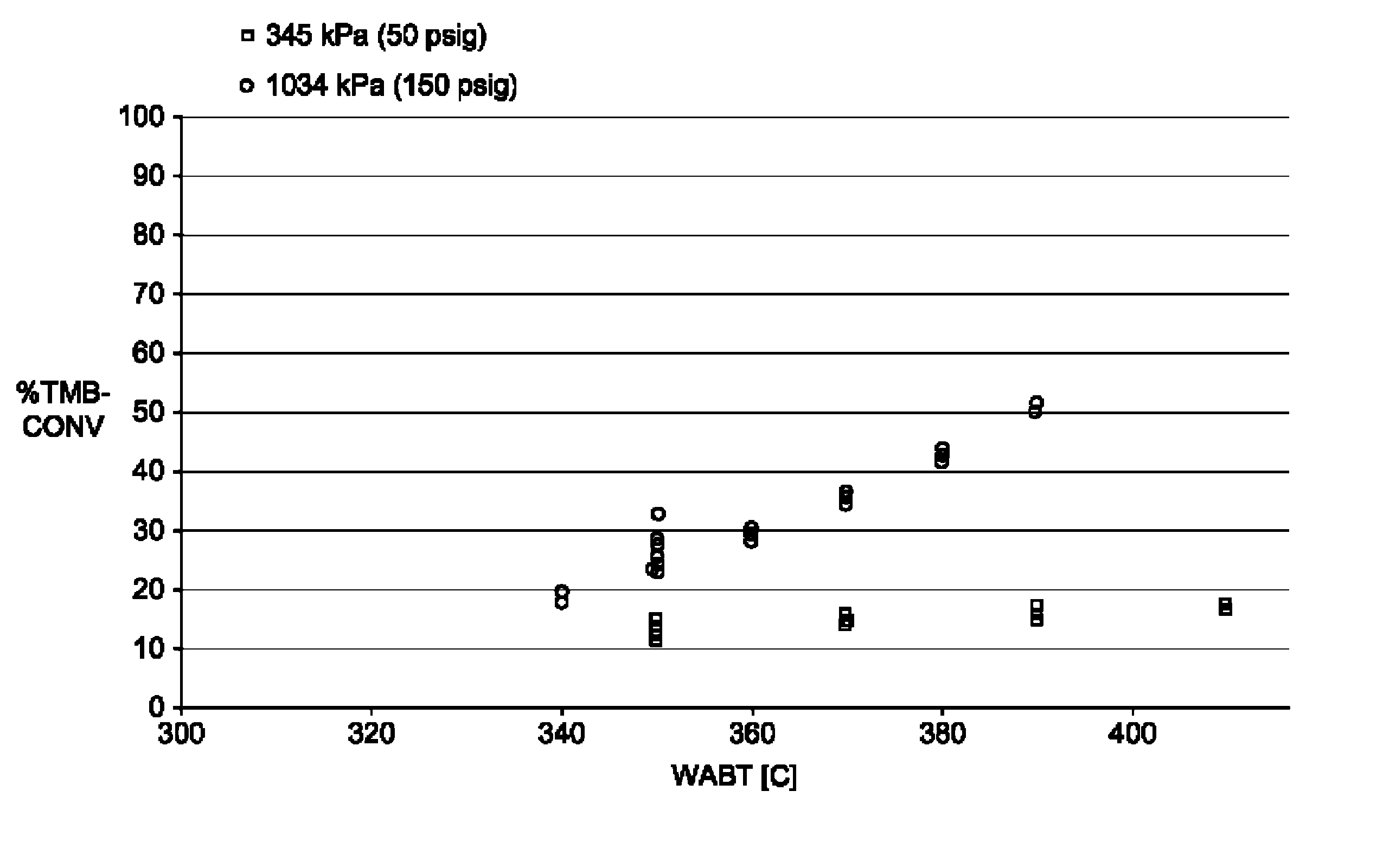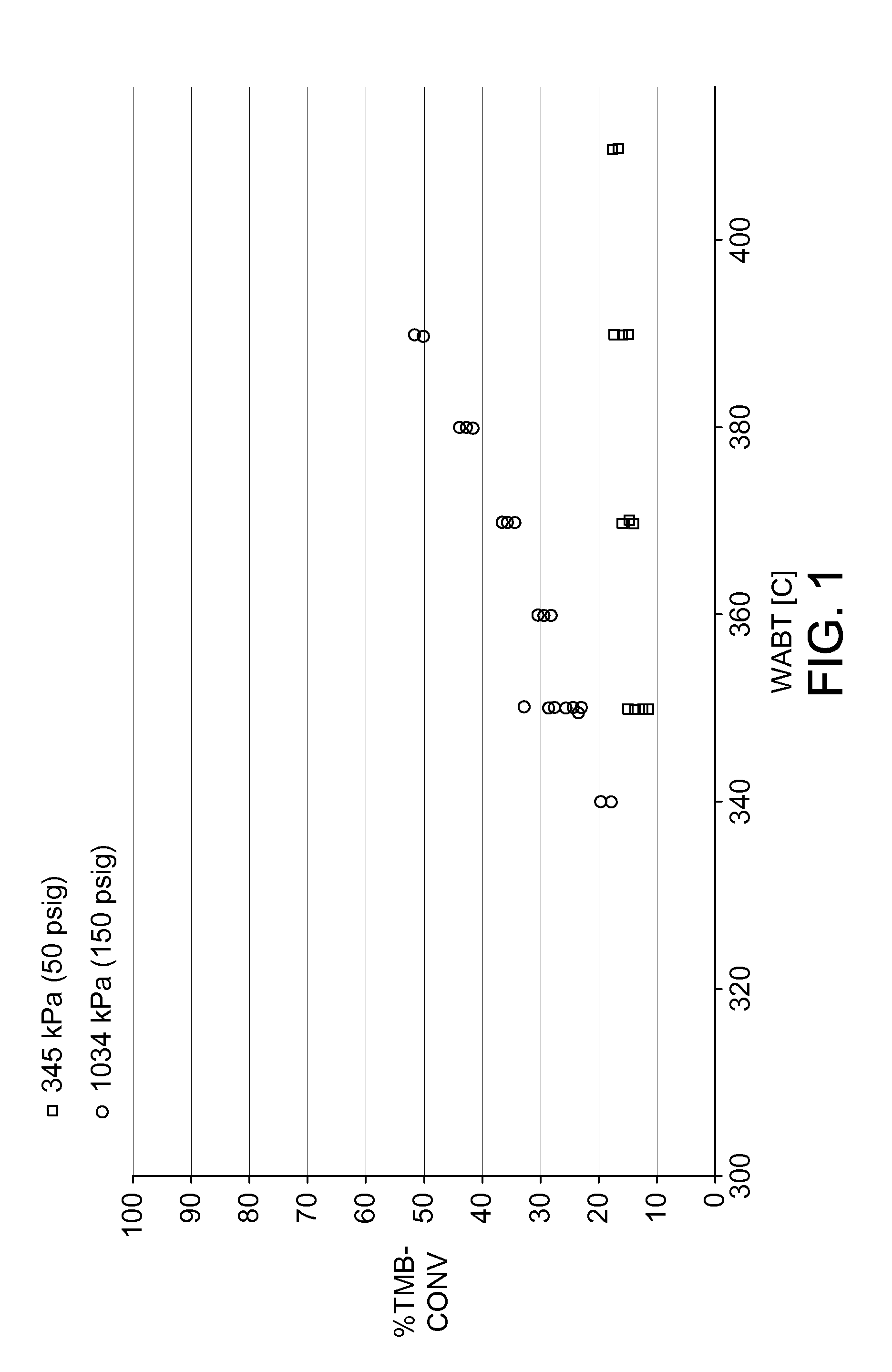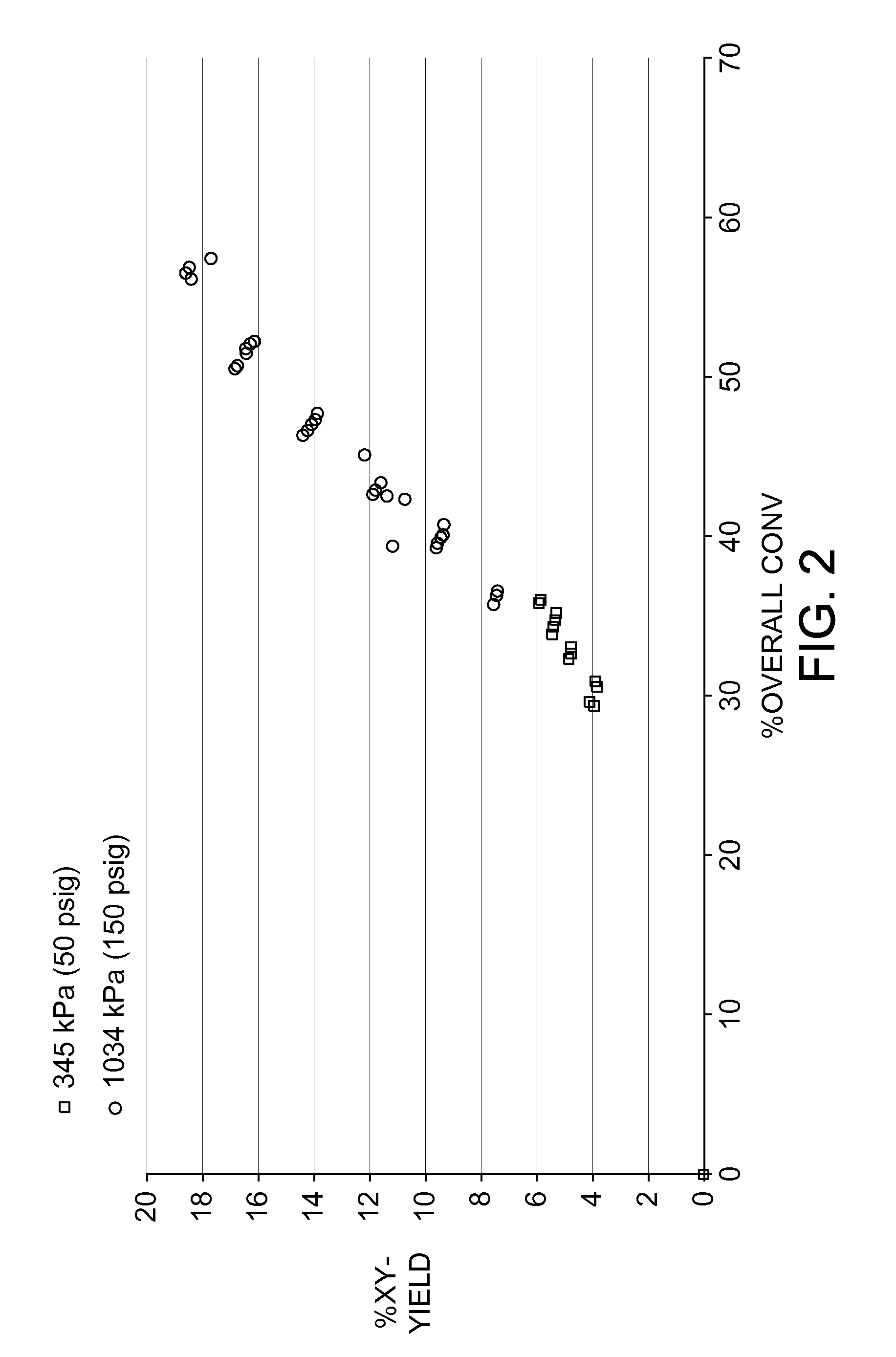Enhanced aromatics production by low pressure end point reduction and selective hydrogenation and hydrodealkylation
a technology of end point reduction and aromatics, applied in the field of low pressure process and catalyst formulation, can solve the problems of deactivation of catalysts in downstream reactors and coke formation
- Summary
- Abstract
- Description
- Claims
- Application Information
AI Technical Summary
Benefits of technology
Problems solved by technology
Method used
Image
Examples
example 1
[0046]A reformate having the composition shown in Table 1 was introduced into a EPR / DEA zone with an average bed temperature of 370° C. (698° F.), a pressure of 358 KPa (52 psig), a H2:HC ratio of 7.0, and a WHSV of 0.84 hr−1. A summary of the product streams in weight % at three successive hourly on-line GC measurements from the EPR / DEA zone is shown in Table 1. Table 2 shows the GC by GC heavy component breakdown for the feed and the product distribution obtained in the second product column. Tables 1 and 2 were obtained using the method described in ASTM / UOP 990-11.
[0047]
TABLE 1wt % ProductFEEDPRODUCTPRODUCTPRODUCTC10.000.180.180.19C20.0010.2511.3911.61C30.005.355.175.67n-C40.000.680.670.62i-C40.000.610.690.62n-C50.000.000.000.00i-C50.000.120.360.27C1-C5 non-A0.0017.2018.4718.99C6-C8 non-A0.000.000.000.00Benzene0.115.205.285.05Toluene0.0319.3618.4918.51Ethylbenzene0.000.080.080.07Xylene0.0813.3213.3513.38C9A55.0026.5926.3726.08C10A16.906.055.975.91C11+27.8712.2011.9912.01Styrene0...
PUM
| Property | Measurement | Unit |
|---|---|---|
| temperature | aaaaa | aaaaa |
| temperature | aaaaa | aaaaa |
| temperature | aaaaa | aaaaa |
Abstract
Description
Claims
Application Information
 Login to View More
Login to View More - R&D
- Intellectual Property
- Life Sciences
- Materials
- Tech Scout
- Unparalleled Data Quality
- Higher Quality Content
- 60% Fewer Hallucinations
Browse by: Latest US Patents, China's latest patents, Technical Efficacy Thesaurus, Application Domain, Technology Topic, Popular Technical Reports.
© 2025 PatSnap. All rights reserved.Legal|Privacy policy|Modern Slavery Act Transparency Statement|Sitemap|About US| Contact US: help@patsnap.com



